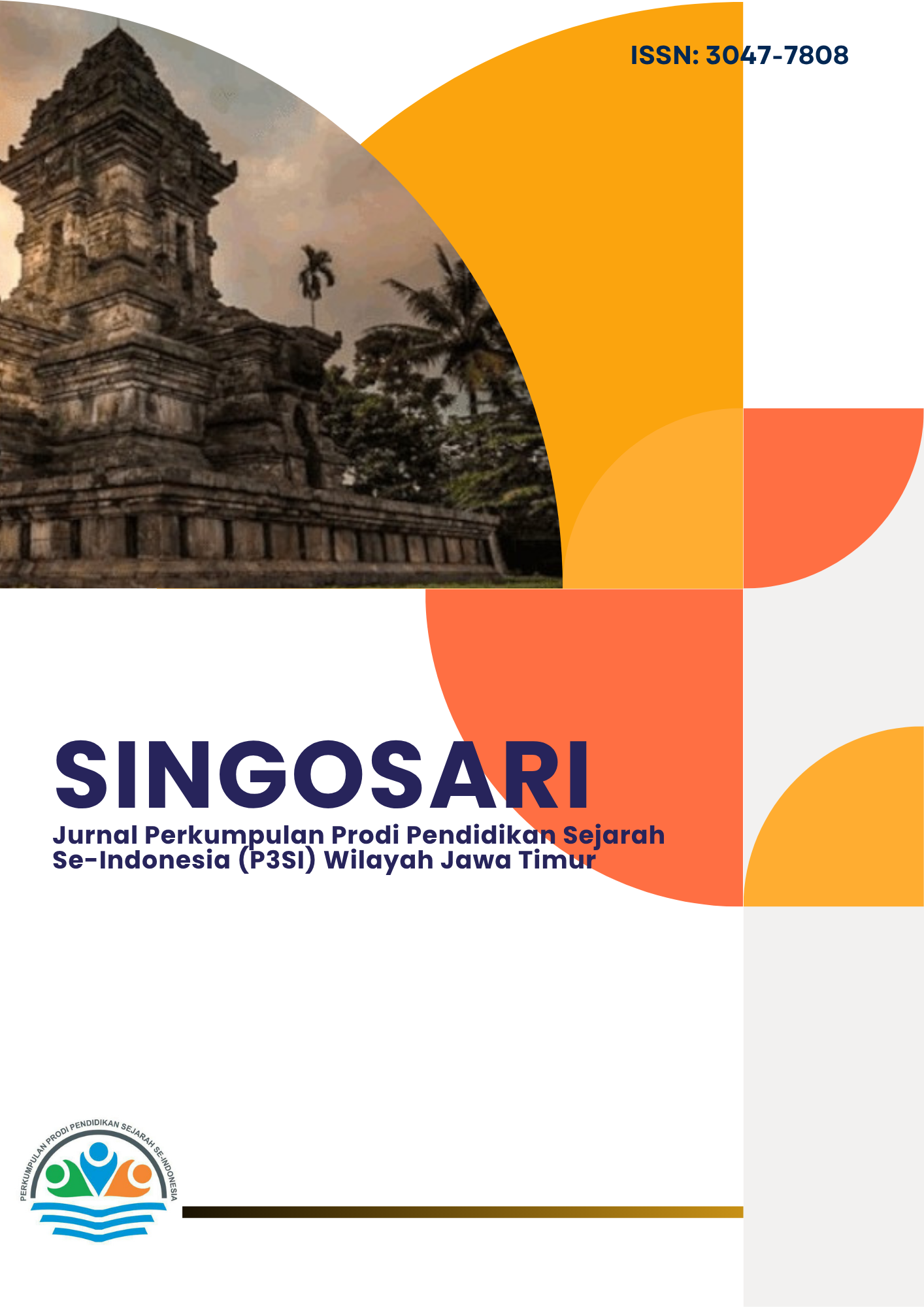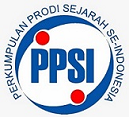The Role of Siti Hinggil in Monitoring Sea Traffic in the Era of the Blambangan Kingdom: Social and Economic Implications in Muncar
DOI:
https://doi.org/10.63440/singosari.v2i2.75Keywords:
Siti Hinggil, Muncar, Social, Economic.Abstract
This article aims to examine the existence and role of Siti Hinggil Site in Muncar, Banyuwangi, as a historical site that supports the social, cultural and economic aspects of coastal communities. The methods used include literature study, interviews, direct observation, and archival analysis to obtain data on the function and value of the site from the past to the present. The results of the discussion show that Siti Hinggil functions as a centre for sea traffic observation, ship surveillance, and a centre for customary and social activities, with an ancient design that reflects traditional community functions. The site has an important role in strengthening social ties and cultural sustainability, despite its transformation due to modernisation and economic dynamics. The novelty of the research lies in emphasising the historical and social value of the site as a source of learning about past maritime roles and the importance of preservation in the socio-economic context of the Muncar region.
References
Asmak. (2025). Wawancara bersama dengan Bapak Asmak (Juru Kunci) tentang Sejarah Siti Hinggil dan Pengaruh terhadap Masyarakat sekitar.
Balai Pelestarian Cagar Budaya Provinsi D.I. Yogyakarta. (2017). Bangsal Siti Hinggil Keraton Yogyakarta.
Dinas Kebudayaan Daerah Istimewa Yogyakarta. (2025). Siti Hinggil Kraton Yogyakarta .
Herlina, N. (2020). METODE SEJARAH (M. Falah & A. D. Paramita, Eds.; 2nd ed.). Satya Historika.
Keraton Yogyakarta Hadiningrat. (2017, July 10). Tata Ruang dan Bangunan Kawasan Inti Keraton Yogyakarta.
Marzuqi, A. M. (2016, July 24). Menelusuri Jejak Siti Hinggil di Blamabangan.
Masrohatin, S., & Khodijah, S. (2019). SPENDING HABITS: DIMENSI SOSIAL EKONOMI PEM- ANFAATAN SUMBERDAYA PERIKANAN MASYARAKAT PESISIR PANTAI SELATAN MUNCAR BANYUWANGI. FENOMENA, 18(2). https://doi.org/https://scholar.googleusercontent.com/scholar?q=cache:vsR3sAjO6-oJ:scholar.google.com/+perekonomian+masyarakat+pesisir+kecamatan+Muncar&hl=id&as_sdt=0,5
Mursidi, A., & Dahlia, S. (2019). PENINGGALAN SEJARAH SEBAGAI SUMBER BELAJAR SEJARAH DALAM PENANAMAN NILAI-NILA KEBANGSAAN DI KECAMATAN MUNCAR KABUPATEN BANYUWANGI.
Novita, F. (2024, May 6). Dampak Revolusi Biru terhadap Perubahan Sosial Ekonomi pada Nelayan Muncar.
Sukatman. (2016). BLAMBANGAN: REKONSTRUKSI IDENTITAS KEBANGSAAN DAN PENGEMBANGAN INDUSTRI WISATA. (N. Agoegrajekti, S. Macaryus, & H. Prasetyo, Eds.). Pusat Penelitian Budaya Etnik dan Komunitas.
Wibowo, B. A. (2025). Wawancara bersama bapak Bayu pegawai Museum Blambangan tentang Siti Inggil.
Downloads
Published
Issue
Section
License
Copyright (c) 2025 Nurul Lutfiyana Rizky, Yuli Astutik , Maulidia Aprilia, Mahfud (Author)

This work is licensed under a Creative Commons Attribution-ShareAlike 4.0 International License.








